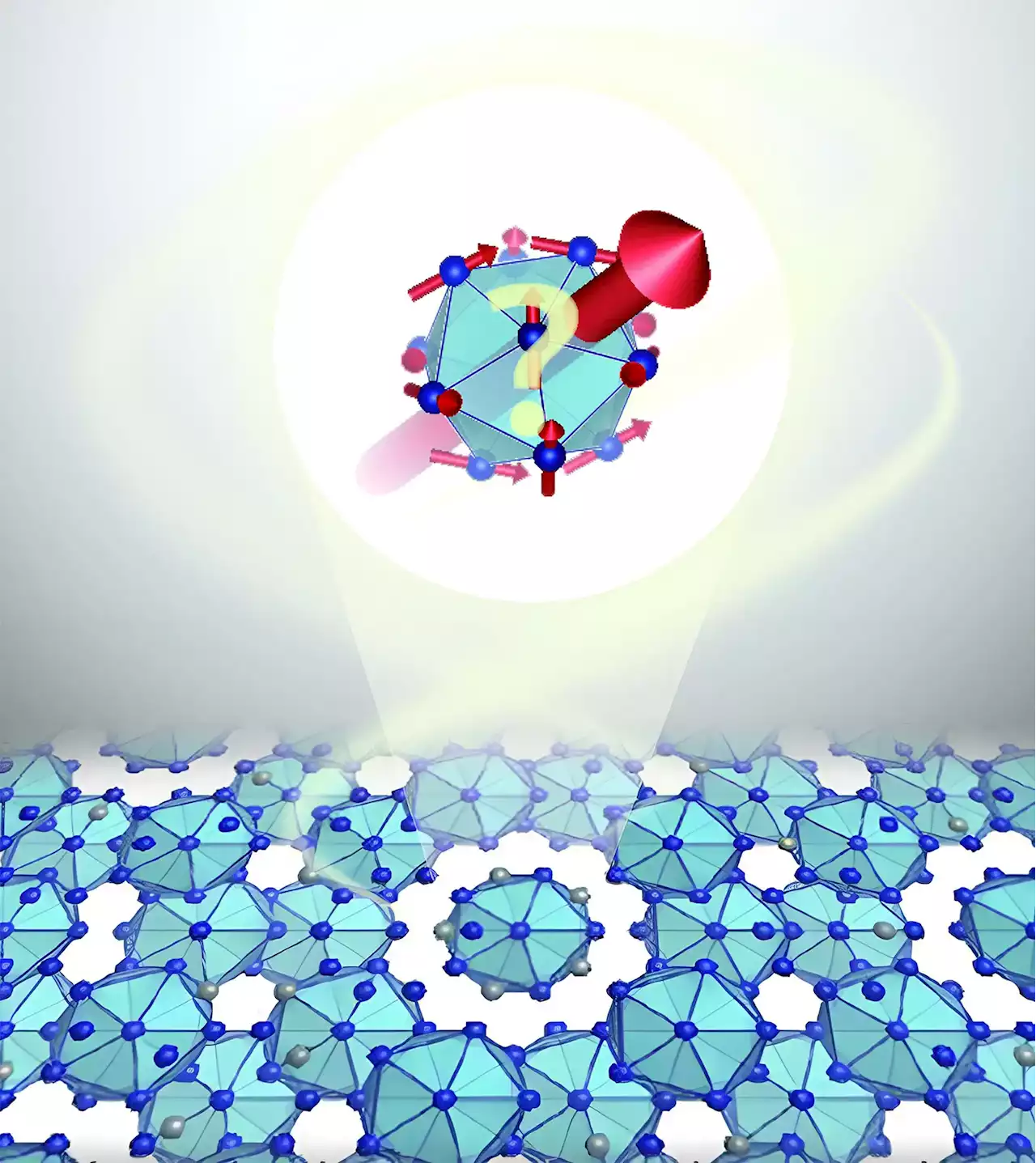Researchers provide direct evidence that the magnetic properties of the novel icosahedral quasicrystals depend on the electrons-per-atom ratio. Professor Ryuji Tamura's team at Tokyo University of Science synthesized a novel icosahedral quasicrystal (i QC) made of gold, gallium, and dysprosium. T
QCs because they have also contained a large fraction of the approximant crystal phase. ACs have a similar structure to QCs, but as they are also magnetic, this interferes with studies on the magnetism of the QC phase alone.
The new i QCs were prepared using mother alloys containing 15% Dy, 62–68% Au, and 23–17% Ga. The mother alloys were synthesized via arc-melting followed by rapid quenching. The resultant i QCs were studied using powder X-ray diffraction, electron microscopy, electron diffraction, and magnetic susceptibility measurements.
The researchers also discovered that the new i QCs exhibit a maximum Weiss temperature, a significant parameter in ferromagnetic transition, at an electrons-per-atom ratio of 1.70, which aligns with previous findings for ACs. This discovery demonstrates that the magnetic properties of i QCs can be well-tuned using the Weiss temperature and e/a ratio .
“The discovery of pure tunable ferromagnetic quasicrystals has the potential to revolutionize and expand the academic system based on crystals. Applying our findings to current theoretical work in the field, for example, in the realm of non-coplanar spin configurations such as hedgehog and whirling configurations, can lead to various nontrivial physical properties in i QCs, including anomalous and topological Hall effects,” concludes Prof. Tamura.
日本 最新ニュース, 日本 見出し
Similar News:他のニュース ソースから収集した、これに似たニュース記事を読むこともできます。
 Nightmares Can Be Silenced by a Single Piano Chord, Scientists FindUsing non-invasive techniques to manipulate our emotions, it might be possible to curtail the screaming horrors that plague our sleep.
Nightmares Can Be Silenced by a Single Piano Chord, Scientists FindUsing non-invasive techniques to manipulate our emotions, it might be possible to curtail the screaming horrors that plague our sleep.
続きを読む »
 Scientists Finally Confirm What's Inside The MoonWell, the verdict is in.
Scientists Finally Confirm What's Inside The MoonWell, the verdict is in.
続きを読む »
 Harvard scientists may have found a ‘cure’ for some types of hearing lossA new paper from Harvard scientists could hold the answers to finding a cure for most types of hearing loss.
Harvard scientists may have found a ‘cure’ for some types of hearing lossA new paper from Harvard scientists could hold the answers to finding a cure for most types of hearing loss.
続きを読む »
 Scientists Discover Method To Evaluate Highly Complex Feynman IntegralsScientists at Mainz University have discovered a method to evaluate highly complex Feynman integrals. What does the world look like at the smallest scales? This is a question that researchers are striving to solve through particle accelerator experiments, such as the Large Hadron Collider at CERN i
Scientists Discover Method To Evaluate Highly Complex Feynman IntegralsScientists at Mainz University have discovered a method to evaluate highly complex Feynman integrals. What does the world look like at the smallest scales? This is a question that researchers are striving to solve through particle accelerator experiments, such as the Large Hadron Collider at CERN i
続きを読む »
 Scientists “Revive” Stone Age Molecules From Ancient DNAIn a highly transdisciplinary study, scientists are rebuilding microbial natural products up to 100,000 years old using dental calculus of humans and Neanderthals. Breakthroughs in ancient genome reconstruction and biotechnology are now revealing the rich molecular secrets of Paleolithic microorg
Scientists “Revive” Stone Age Molecules From Ancient DNAIn a highly transdisciplinary study, scientists are rebuilding microbial natural products up to 100,000 years old using dental calculus of humans and Neanderthals. Breakthroughs in ancient genome reconstruction and biotechnology are now revealing the rich molecular secrets of Paleolithic microorg
続きを読む »
 Ocean temperatures are off the charts right now, and scientists are alarmed | CNNOcean temperatures have skyrocketed this spring, leaving scientists scrambling to figure out why. But the impacts are potentially catastrophic if temperatures continue to head off the charts.
Ocean temperatures are off the charts right now, and scientists are alarmed | CNNOcean temperatures have skyrocketed this spring, leaving scientists scrambling to figure out why. But the impacts are potentially catastrophic if temperatures continue to head off the charts.
続きを読む »
